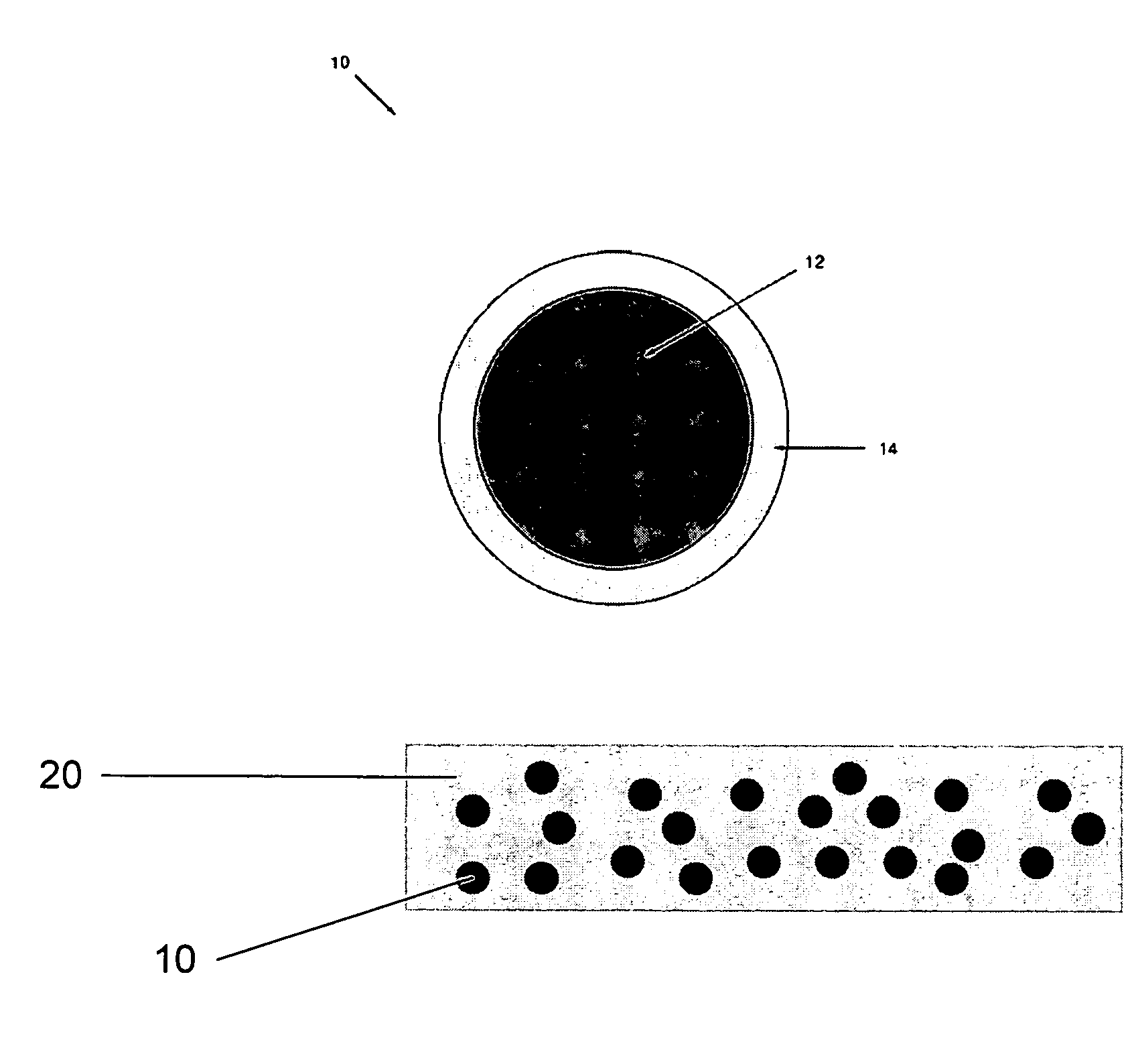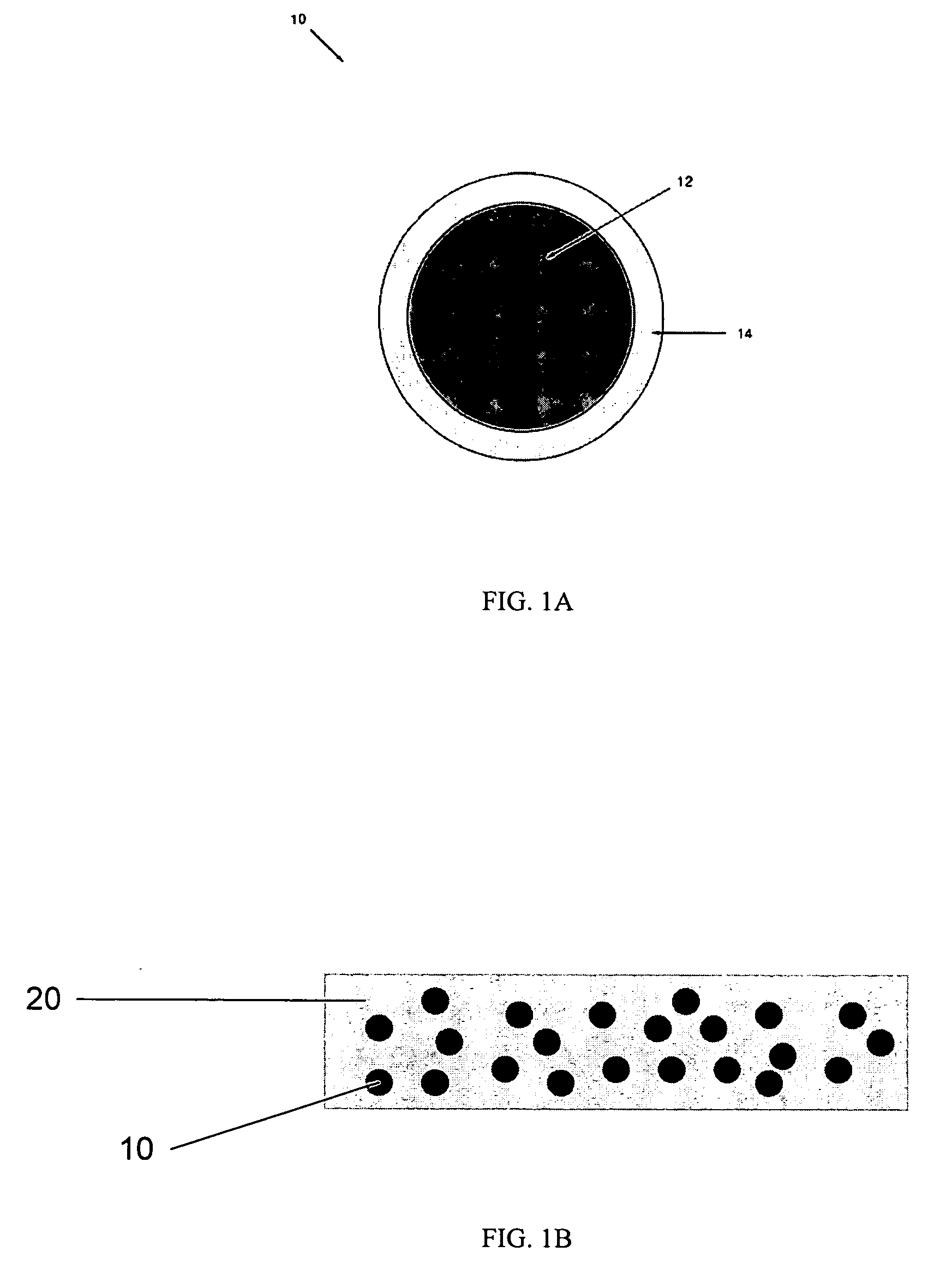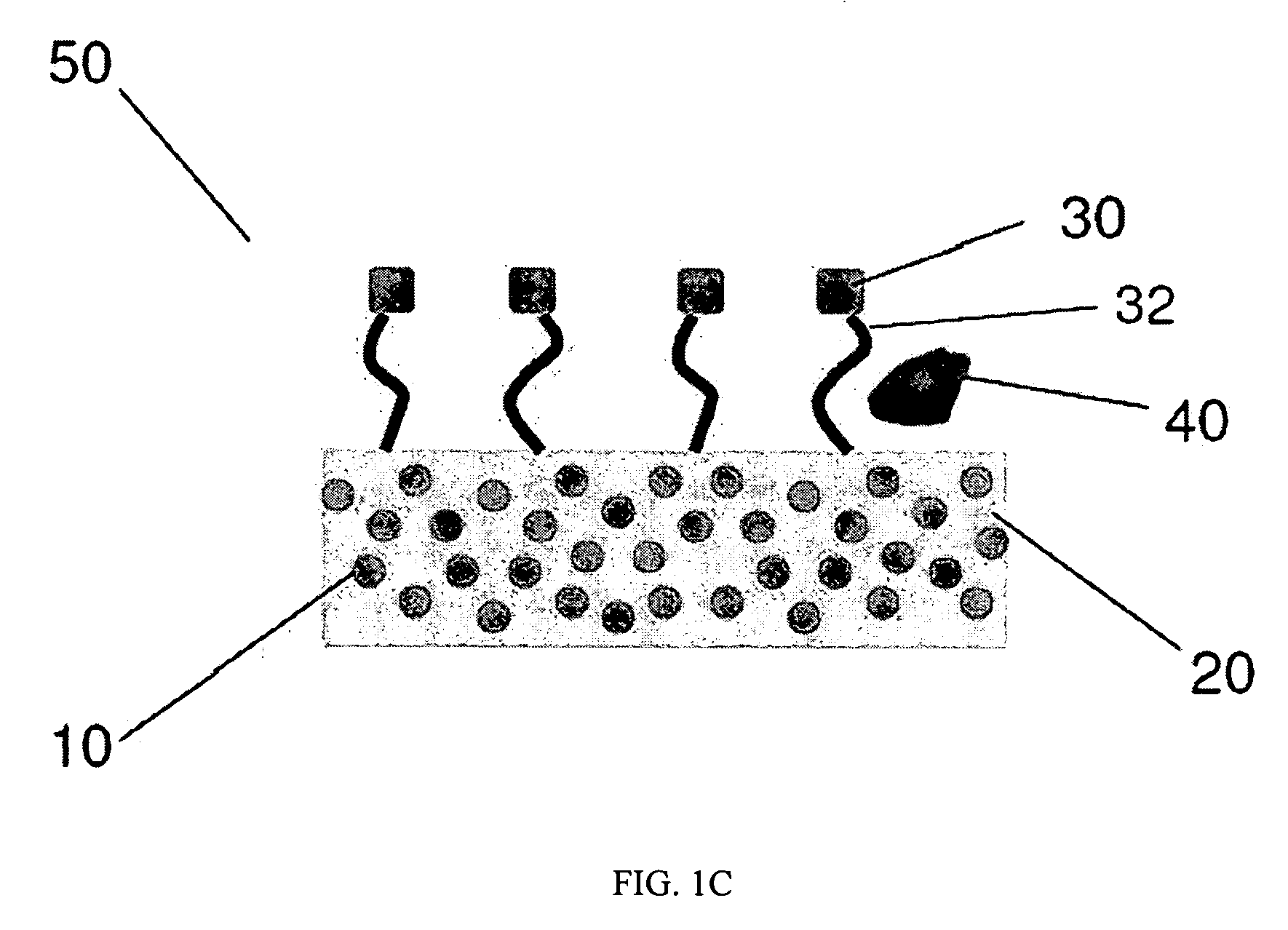Emissive compositions with internal standard and related techniques
a technology of emissive composition and internal standard, applied in the field of determination of analytes, can solve the problem of difficult design of a sensor that selectively interacts with a particular biological analyte of interest, such as a protein
- Summary
- Abstract
- Description
- Claims
- Application Information
AI Technical Summary
Problems solved by technology
Method used
Image
Examples
example 1
[0087]Monomers A, C, and D were synthesized according to literature procedures. Diethynylpentiptycene (B) was purchased from Nomadics Life Sciences Inc. Pd(PPh3)4 and CuI were purchased from Strem. All solvents for polymerization were obtained from Aldrich and degassed by rapid sparging with argon for 20 minutes before use. Bio Beads S-3 (Bio-Rad Laboratories) used for size exclusion chromatography were pre-swelled in DMF overnight before use. N,N-dimethylformamide (DMF, HPLC grade), Tris(hydroxymethyl)aminomethane buffer, sodium chloride, calcium chloride, and methyl viologen dichloride (MV2+) were purchased from Aldrich and used as received. 1-methyl-1′-naphthalen-2-yl methyl-[4,4′] bipyridinyl dication dichloride (MV2+-nap) was previously synthesized in a separate report. Polymer molecular weights were determined using gel permeation chromatography in THF solution vs. PS standards. 1H NMR spectra were recorded on a 500-MHz Varian Unity instrument. All photophysical measurements w...
example 2
[0089]The polymers were synthesized according to the following general procedure, using Pd-catalyzed Sonagashira coupling reactions between respective diacetylene and diiodide monomers in quantitative yield.
[0090]Monomers were added to an 10 mL Schlenk tube with a stir bar and evacuated and purged with nitrogen before addition of Pd(PPh3)4 and CuI (catalytic amounts) in a glovebox. 1.5 mL of 5:4:1 (v / v) N-methylpyrrolidone:toluene:diisopropylae, degassed with rapid sparging of argon, was added to the flask, for complete solubility of the starting materials. The flask was sealed and heated for 72 hours at 65° C., after which the solution turned from a milky white color to yellow with bright green fluorescence. After removing from heat, ethyl acetate was added to precipitate the reaction mixture to a yellow solid, which was subsequently purified using size exclusion chromatography with DMF as the eluent to yield the product polymers.
[0091]Polymer P1 was synthesized according to the ab...
example 3
[0095]In order to optically monitor the layering process of PPEs (e.g., P1-P3) on a substrate, a series of polymer films were sequentially formed on glass slides prelayered with PEI:PSS:PEI, and the absorbance of each PPE film layer was measured. The first PPE film layer was formed by dipping a glass slide prelayered with PEI:PSS:PEI in a solution of PPE (1×10−3 M) for 15 minutes, following by rinsing with deionized water and drying with nitrogen stream. The absorbance of the film was then measured. To form the second PPE film layer, the slide was first dipped in PEI for 15 minutes, rinsed with water, and then dipped in the PPE solution as described above, for subsequent layers. For each glass slide, a total of four PPE layers was deposited, with a PEI layer in between each PPE layer.
[0096]FIG. 4A shows the absorption spectra for a film of P1-coated particles, for 1, 2, 3, and 4 layers of P1. FIG. 4B shows the absorption spectra for a film of P2-coated particles, for 1, 2, 3, and 4 ...
PUM
| Property | Measurement | Unit |
|---|---|---|
| particle size | aaaaa | aaaaa |
| particle size | aaaaa | aaaaa |
| particle size | aaaaa | aaaaa |
Abstract
Description
Claims
Application Information
 Login to View More
Login to View More - R&D
- Intellectual Property
- Life Sciences
- Materials
- Tech Scout
- Unparalleled Data Quality
- Higher Quality Content
- 60% Fewer Hallucinations
Browse by: Latest US Patents, China's latest patents, Technical Efficacy Thesaurus, Application Domain, Technology Topic, Popular Technical Reports.
© 2025 PatSnap. All rights reserved.Legal|Privacy policy|Modern Slavery Act Transparency Statement|Sitemap|About US| Contact US: help@patsnap.com



